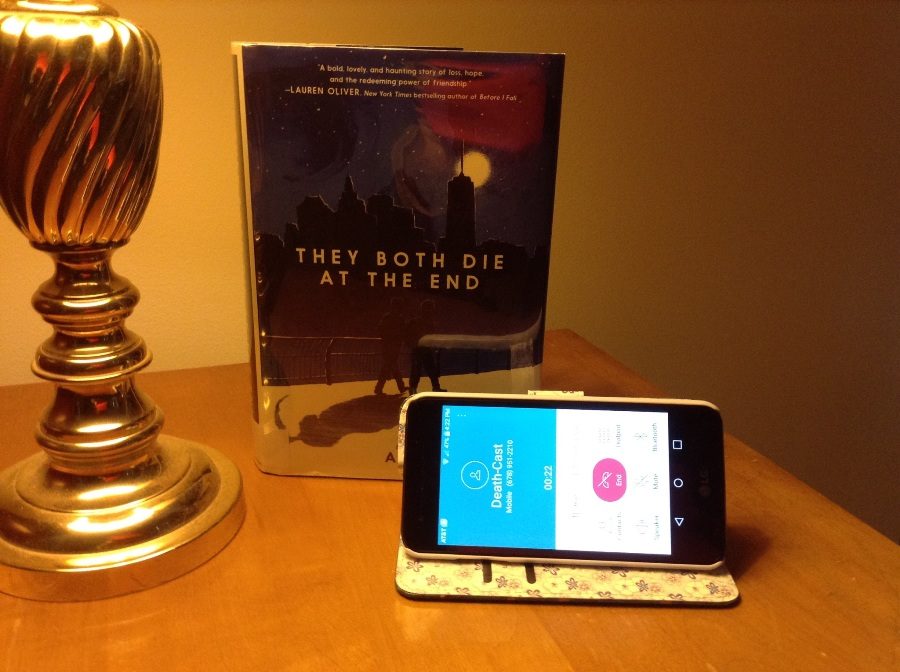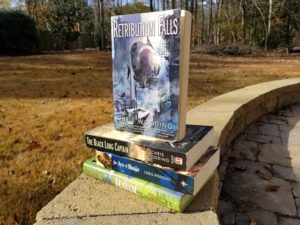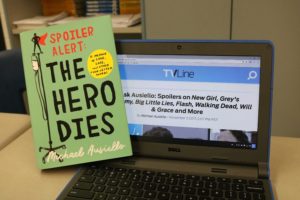Amazing concept falls flat when put to paper
“They both die at the end” follows two strangers, Mateo Torrez and Rufus Emeterio, as they team up for one last adventure before they die at the end of the day. While the premise behind this book seems compelling, it proves to be a disappointing read and an overall waste of time.
December 18, 2017
Every book lover has experienced a novel that sounds absolutely amazing based upon its back cover, but once put onto pages crashes and burns instead of defying expectations. Unfortunately, “They both die at the end” is just one of those books that readers desperately want to love, yet simply cannot find it within themselves to do so.
In a futuristic society, death is no longer a total mystery due to the creation of Death-Cast, a company that calls people on their End Day to give them one last chance at life. Fortunately, with this advancement comes creative ways for people to spend their last day on Earth right. Among them is an app pairing two people together to ensure no one has to spend their last day completely alone.
A little after midnight on Sept. 5, 18-year-olds Mateo Torrez and Rufus Emeterio both receive a call from Death-Cast giving them the wretched news that they will die today. As neither one of them want to spend their last day alone, these strangers are united through the Last Friend app for one last opportunity to live life to the fullest. While the odd duo’s intention was simply not dying alone, they form what could have been a lifelong friendship had the circumstances permitted it.
Based on summary on the back cover, this book is built on a wonderful concept that definitely had the potential to be something great. Unfortunately, once the reader actually sits down and begins reading all of that potential is thrown out the window.
The reader must get halfway through the book before anything interesting happens as the first 200 pages set up the lives of each characters and their loved ones. All great books have a solid backstory and foundation. However, the exposition usually does not take up half of the book’s content. By the time the setup has taken place and the characters have said their goodbyes to those closest to them, the reader is bored and ready to set the book down for good.
Aside from the book being extremely slow-moving, the author attempts to add seemingly deep comments about death through conversations or individual’s thoughts that leave the reader bored and overall annoyed. The author could have easily added thought provoking questions about death causing readers to closer evaluate their own lives, but, in this case it would have been better left alone.
Another complaint found throughout the novel concerns the character’s discussions about their upcoming demises. It is understood that the characters have a right to be worried and terrified about dying. Sadly, almost every page references either Death-Cast or their imminent deaths. Again, obviously the book should be allowed to contain some whining or reference to this fact as it is the main premise of the novel, but the way in which it is conveyed takes away from supposedly theme of living life to the fullest.
Thankfully, “They both die at the end” gets slightly better after the reader manages to trudge through the first half of the book (if one manages to get that far). The character’s dwell on their deaths less and begin to actually live as the book continues, leaving the reader with a book that wasn’t a complete waste of time.
While the book does eventually pick up, it ultimately leaves the reader unimpressed and a little annoyed. Unless you enjoy sluggish books concerning a topic that should be anything but sedate, “They both die at the end” is not worth the trouble.








